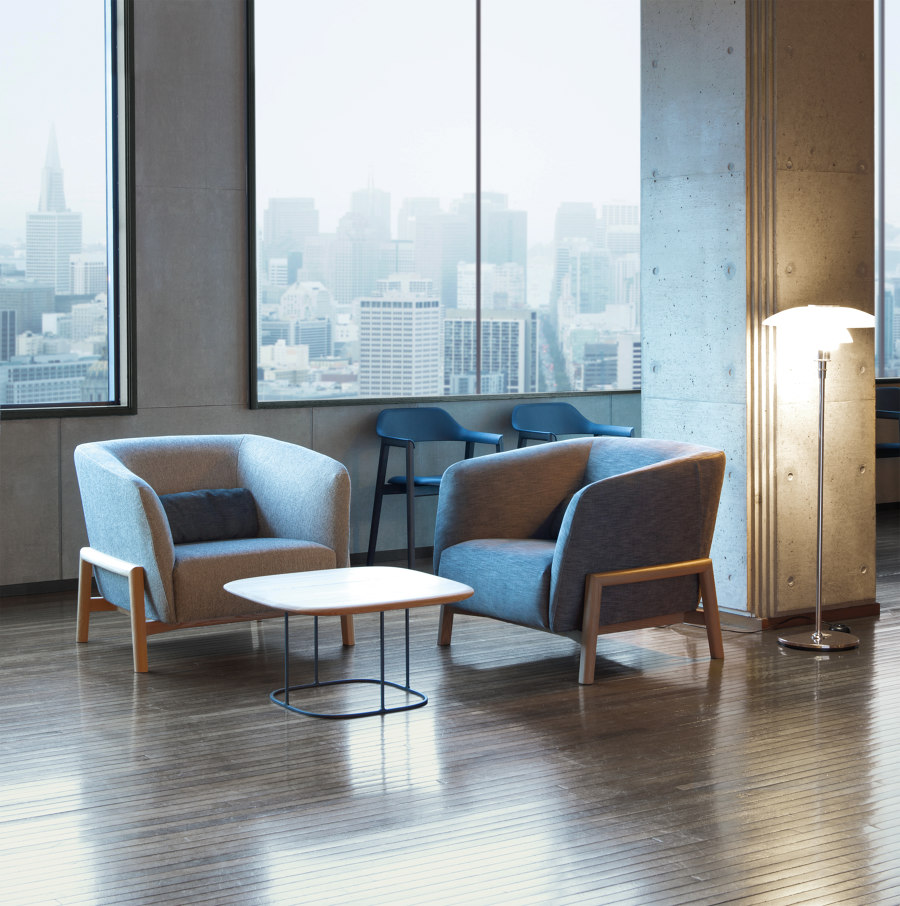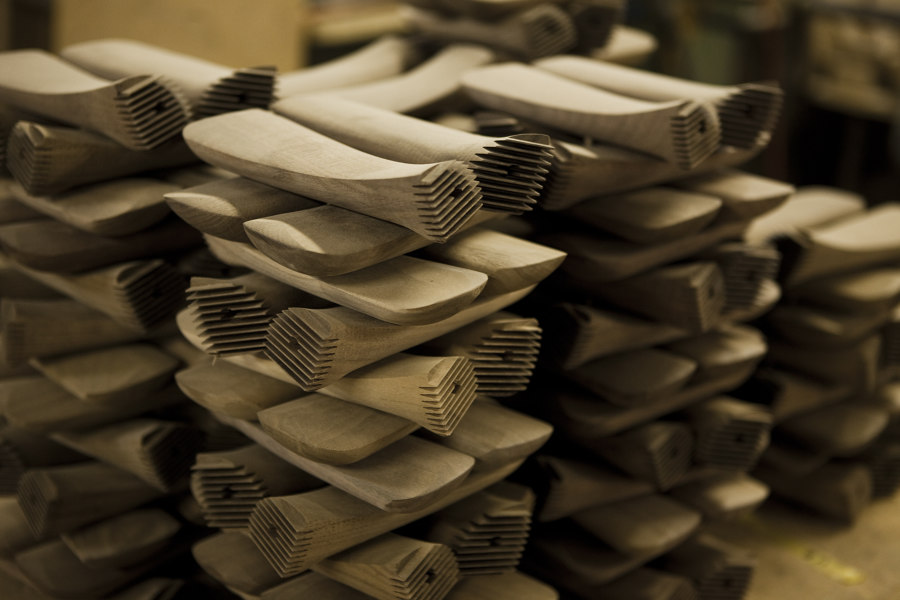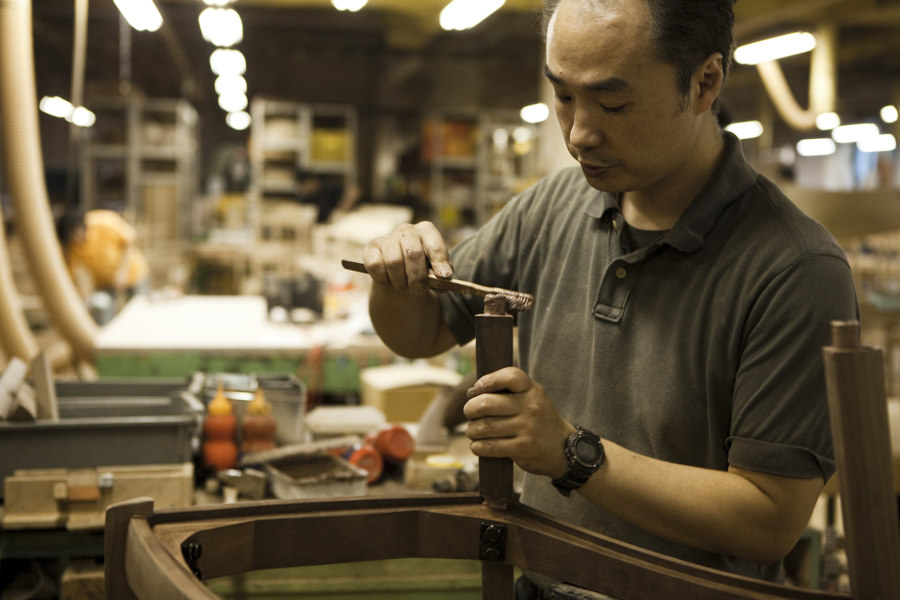Second nature: Conde House
Brand story by Simon Keane-Cowell
Hokkaido, Japan
28.04.20
With a deep understanding of materials, coupled with fine Japanese aesthetics and craftsmanship, CONDE HOUSE makes long-life furniture that honours and celebrates nature without taking it for granted.
Japanese aesthetics, married with a deep understanding of materials and craftsmanship, are the essence of Conde House. Shown here, the KORENTO armchair, designed by Mikko Halonen
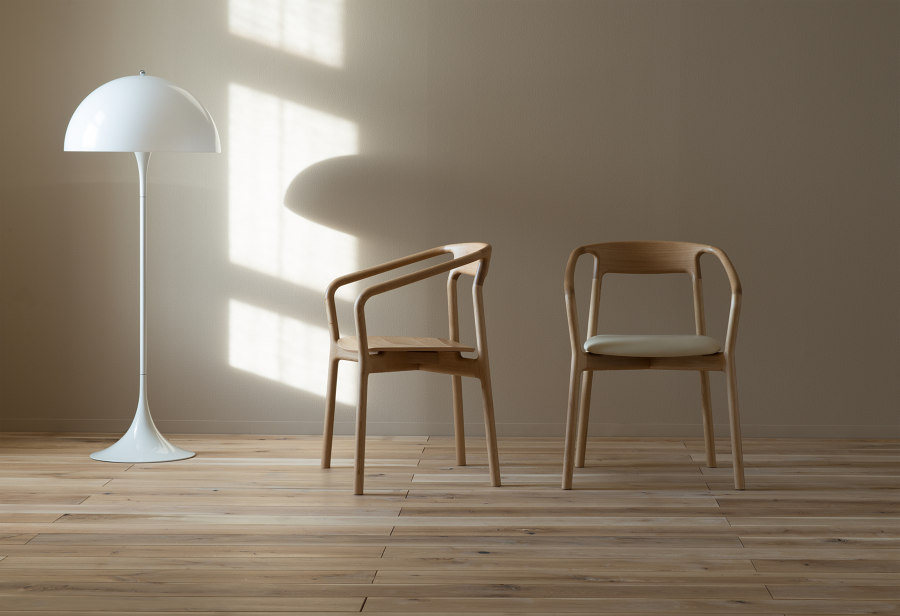
Japanese aesthetics, married with a deep understanding of materials and craftsmanship, are the essence of Conde House. Shown here, the KORENTO armchair, designed by Mikko Halonen
×My legs survived. But only just.
Three hours of sitting on your knees when you’ve reached a certain age demands a degree of physical fortitude. You see, it was my first time at a Japanese tea ceremony. But well worth it. For I came to realise just how much the adoption of such a formal and respectful posture (the Japanese call it seiza) has to do with remaining present and in the moment – and, in this case, a mentally active participant in an unfolding ritual. The reward in terms of mindfulness is truly great.
What also occurred to me was the material respect that was shown as part of the proceedings. A teacup becomes almost more important than its contents, as it is held, examined, turned and wiped. An almost meditative exercise. The same, indeed, could be said of Conde House, the Japanese furniture manufacturer that’s celebrating 50 years of producing supremely considered, painstakingly crafted wood furniture for contract and residential contexts.
Michael Schneider’s TEN collection is characterised by a visual lightness that belies robust construction (top); The superior craftsmanship of Conde House’s artisans is clearly identifiable in David Trubridge’s sculptural KINA FLOOR ottoman (above)

Michael Schneider’s TEN collection is characterised by a visual lightness that belies robust construction (top); The superior craftsmanship of Conde House’s artisans is clearly identifiable in David Trubridge’s sculptural KINA FLOOR ottoman (above)
×Eschewing the vagaries of fashion, the pared-down, yet expressive, formal quality of its products – authored by a raft of Japanese designers, including Naoto Fukasawa and Nendo – is more of a quietly voiced study in the relation between natural materials and space than a full-throated declaration of newness and trend. Think chant rather than shout.
Based on Japan’s northernmost island, Hokkaido, which is made up predominantly of forest and agriculture, the Conde House factory couldn’t be closer to nature. The region around Asahikawa is home to a major concentration of ash and oak trees, which goes a significant way to explaining the major concentration of furniture producers in the area. When in Rome. (Or Asahikawa.)
Specialising in solid- and veneer-wood construction, Conde House might even be regarded by some as an extension of nature itself. “The nature of Hokkaido is the very DNA of the Conde House brand,” explains company president Tetsuya Fujita. Via an exquisitely balanced combination of judicious material selection, traditional handcraft and computer-aided production technology, the brand has succeeded in creating furniture that not only uses and respects the stuff of nature, it allows it to live on in a new form.
The notion of levity is expressed in the name of German designer Michael Schneider’s TEN collection for Conde House, “ten” meaning sky. Shown here, his armchair, highboard bar, sideboard and extendable table
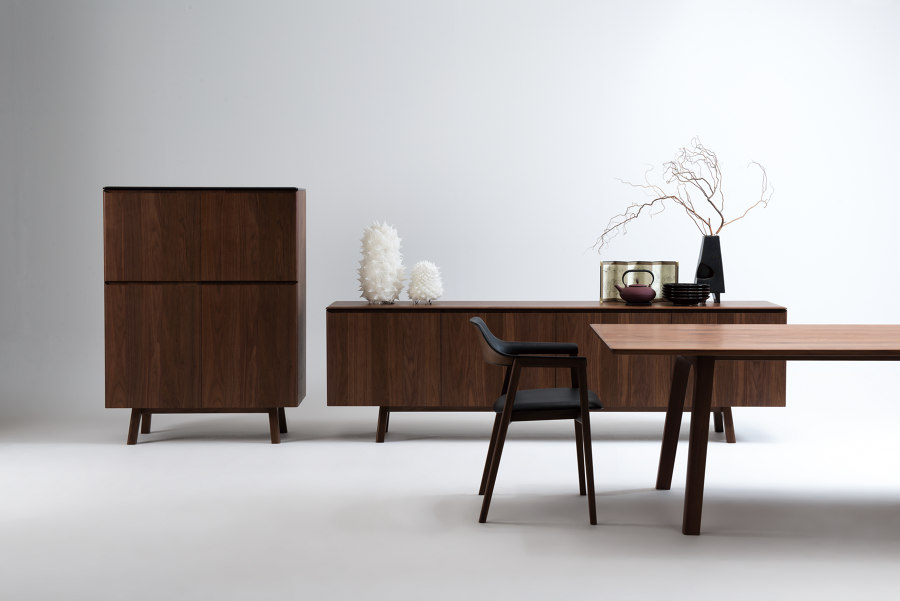
The notion of levity is expressed in the name of German designer Michael Schneider’s TEN collection for Conde House, “ten” meaning sky. Shown here, his armchair, highboard bar, sideboard and extendable table
×With each piece taking up to three weeks to complete, it is made to last a lifetime. Or three lifetimes, according to Fujita – materially, constructionally and in terms of its design. Conde House is definitely not in the obsolescence game. What’s more, the company has been planting oak trees on its own land since the turn of the millennium in an attempt to replace the natural resources it uses.
The brand’s highly conscious use of materials is identifiable, moreover, in the resolutely Japanese aesthetics of its chairs and other products, characterised by such minimal lines as to make them almost haiku-like, while the use of thin strips of wood veneer laminated together and shaped in large presses, rather than steam-bent, guarantees the most efficient use of every tree.
Wood is the hero when it comes to Conde House’s expertly crafted products. Used judiciously, its grain, hue and texture are given full-throated expression
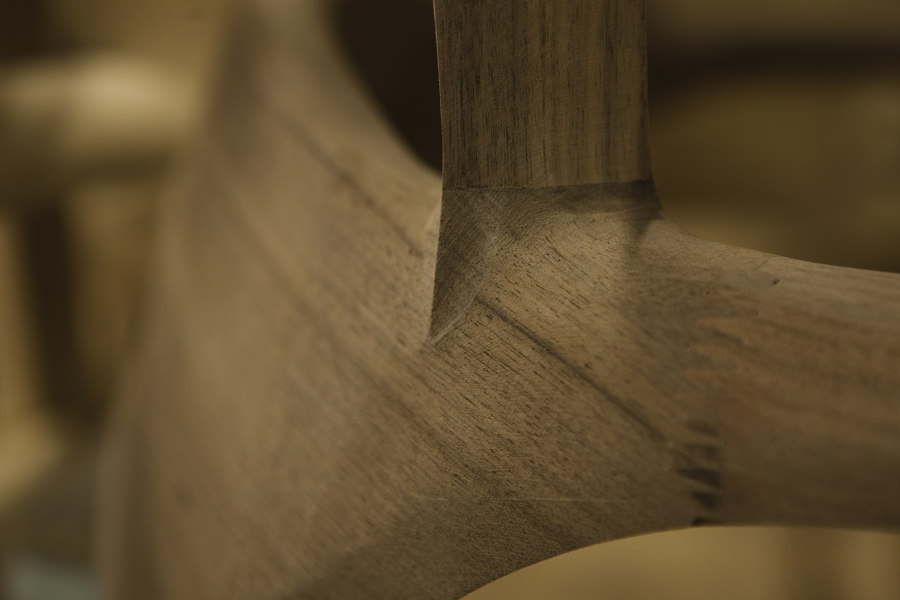
Wood is the hero when it comes to Conde House’s expertly crafted products. Used judiciously, its grain, hue and texture are given full-throated expression
×Wood stands out as the true hero with Conde House. Never over-articulated, it is given a platform to speak for itself. “Japanese craftsmanship is about handcrafting with great care, paying attention to details from the user’s perspective,” explains Fujita. “All the while in awe of nature.”
And no one knows nature better than Conde House’s master craftsmen. For the most part Hokkaido natives, they’re as much a long-term proposition as the furniture they make. Trained artisans who continue to develop their expert skills at Conde House over many years, they remain with the company for decades. But these aren’t blinkered artists. While they may show a reverence for materials and a passion for lending them form, they never lose sight of the real goal: to elevate the material world of their clients and end-users.
Mainly locals, Conde House’s craftsmen are trained artisans, who, during their often decades-long stay with the company, continue to hone their specialist skills
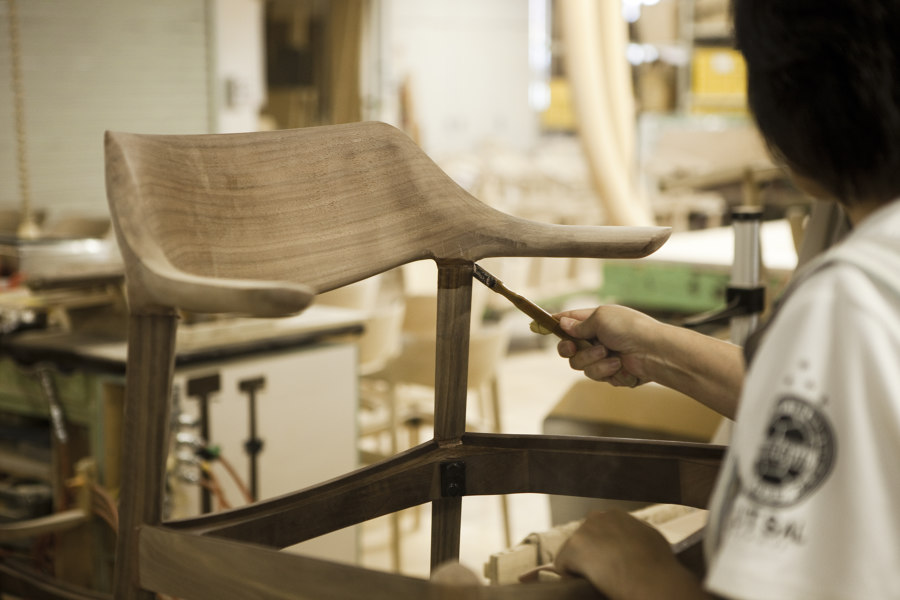
Mainly locals, Conde House’s craftsmen are trained artisans, who, during their often decades-long stay with the company, continue to hone their specialist skills
×Fujita sees it as a dialogue. “We’re constantly striving for closer communication with our customers, so we can offer them ever-more comfortable lifestyles informed by the spirit of Hokkaido and by Japanese aesthetics.”
Time to brush up on your conversational Japanese. Tea optional.
© Architonic





